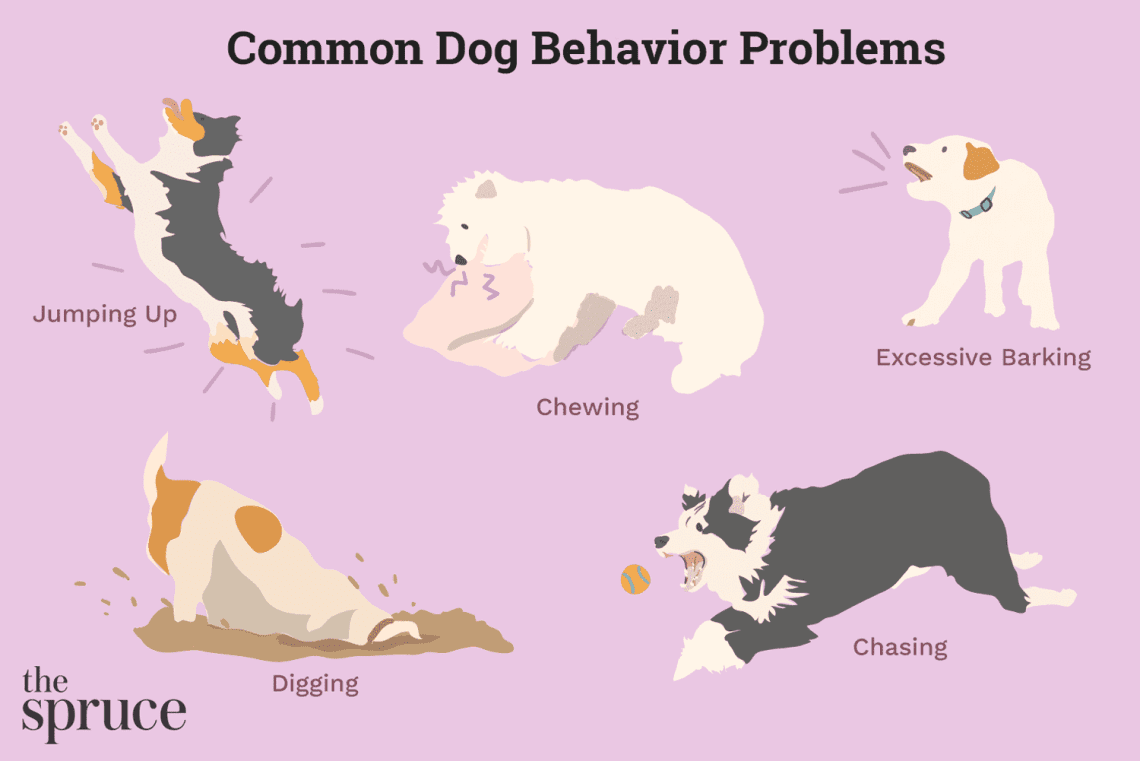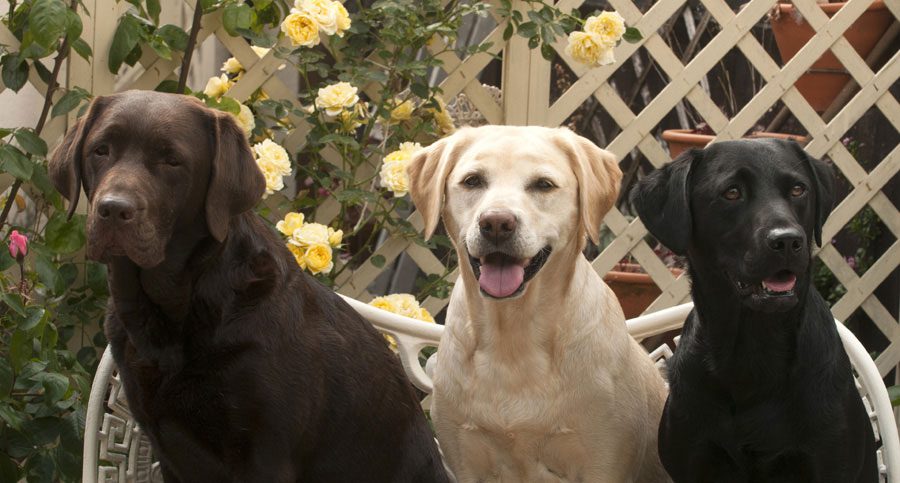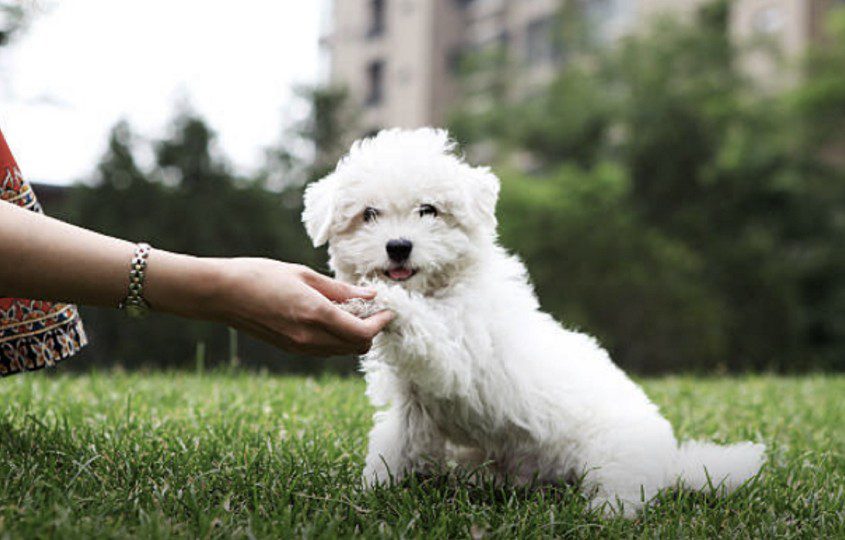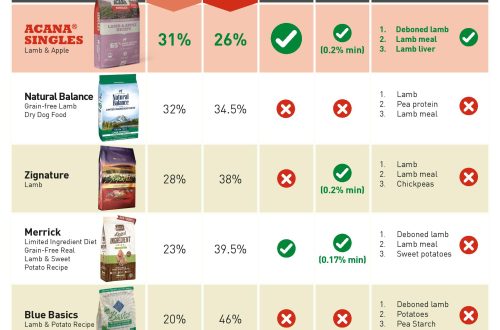
Correction of problematic dog behavior
As a rule, the owner talks about the problematic behavior of the dog if the dog behaves in a way that he does not like. Often a person honestly tries to understand the reason and find an approach, but he fails. However, the behavior of the dog can be viewed from a different point of view.

Contents
Features of dog behavior
Any behavior, including dog behavior (and even problematic dog behavior), is a way of coping with the “challenges” of the environment. For example, in case of danger, a living being tries to escape, and if it is cold, it looks for a source of heat. That is, he tries not only to exist, but to somehow adapt to what cannot be changed by changing his behavior.
A dog cannot behave “good” or “badly” – it just reacts to the conditions in which it finds itself, as best it can. And this adaptation, which owners call problematic dog behavior, can be divided into 2 types:
- The dog exhibits normal species-typical behavior (characteristic of a dog as a biological being), but this behavior is uncomfortable at home. For example, a dog steals food from the table or barks loudly at every extraneous sound.
- A dog cannot behave normally because it lives in abnormal conditions. For example, in close quarters (when kept in an empty enclosure without additional stimulation), obsessive motor stereotypy may develop.
The first case is not the dog’s problem, but it could be the owner’s problem. In the second case, the owner may not notice the problem (things are intact, but the fact that the dog runs in circles does not bother him), but the dog has problems, and they are serious.

In general, dog behavior can be divided into 2 types:
1. Innate dog behavior:
- A response to a key stimulus that triggers a behavior pattern already built into the dog (for example, a dropped ball elicits a mouse jump response). Without a stimulus, this reaction does not occur.
- Mutations that can cause behavioral problems such as disease (such as Doberman stereotypes) or hormonal changes (including domestication in general, whereby the dog does not behave like a wolf around the house).
2. Learned dog behavior:
- Socialization (giving the puppy key stimuli at the right time). There is an opinion that it is possible to socialize an adult dog. It’s a delusion. In the strict sense of the word, socialization is certain periods in childhood, when the memory is especially sensitive, and the puppy can “grab” more, develop certain complexes of behavior, and respond to key stimuli. Although there are ways to slightly recreate the sensitivity of memory and return the seeming possibility of socialization. But it cannot be called socialization in the full sense of the word.
- Learning. The dog may have come up with good solutions on its own, which may not seem so good to the owner (for example, stealing food from the table is great). A person can also reinforce unwanted behavior: for example, if a dog has achieved its goal by barking, a person has paid attention to it, then it is likely that it will continue to bark to get attention.
Congenital and acquired behaviors can overlap.

The innate properties of dogs must be considered. Actually, the goal of competent selection is to create a dog that will be good at its job with minimal human impact. But if the dog gets in the wrong place, it’s sad. For example, if a Labrador, whose ancestors were all selected and trained to be guides to the blind, gets into agility, he is unlikely to succeed.
Methods for correcting dog behavior
Unfortunately, most owners, if asked what methods of correcting dog behavior they know, the first thing they will name is punishment. However, this method of correcting dog behavior is far from being the most effective.
Punishment as a Method to Correct Problematic Dog Behavior: Why It Doesn’t Work
First of all, punishment as a method of correcting problem behavior in dogs has a very limited impact. It may make the dog stop chewing on your slipper, but it has no effect on motivation: the desire to chew something will not disappear in the dog, and he will simply look for another object or wait for the moment when you cannot see him.
In addition, punishment as a method of correcting problem behavior in dogs has many side effects:
- Aggression.
- Escape.
- distrust of the owner.
- Redirected aggression.
- Ignoring the owner.
These reactions of the dog, in turn, cause dissatisfaction of the owner and a desire to punish the pet, and the circle closes.
The main disadvantage of punishment as a method of correcting the dog’s behavior is that we do not offer the dog an alternative, which means that we cannot reinforce the desired behavior.

What does a dog behavior specialist do?
If the owner is faced with problematic dog behavior, he can seek help from a dog behavior correction specialist.
A dog behavior specialist knows that not only is each dog unique and has its own characteristics, but the owners are not alike. So every consultation is also individual. However, there are general trends in how a dog behavior correction specialist conducts a consultation.
- First of all, the conditions of keeping the dog are analyzed. In order for a dog to behave normally, it must have at least a minimum of comfort. And first of all, a specialist in the correction of dog behavior gives advice on changing the conditions of the dog.
- Conditions are created in which the problematic behavior of the dog will not manifest itself (use of humane controls, veterinary drugs or the creation of rituals).
- Conditions are created in which the desired behavior can occur.
- A balance is created between controllability and the diversity of the environment in which the dog lives.






